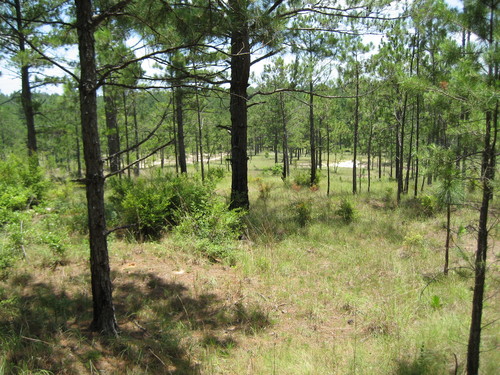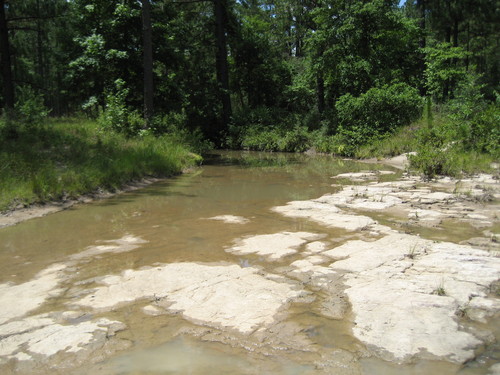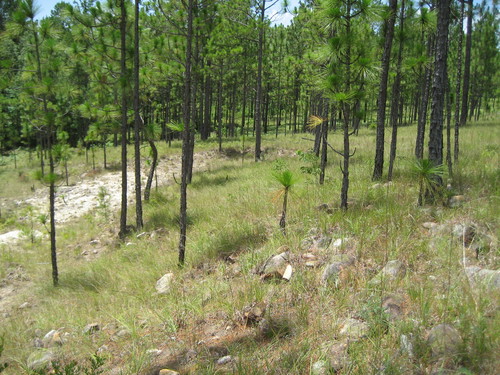By Rickey Robertson
Throughout the 1800's one of the most dependable means of transportation was by stagecoach. Passengers could travel in a somewhat comfortable coach that would carry them and their baggage to various locations of their choice. When the stagecoach roads and routes were laid, they followed previous wagon roads and trails, plus they had to follow the natural routes such as across known fords in the creeks, along ridgelines that were passable even in wet weather, and over and around rock hills and canyons.
One such stagecoach route came through present day Peason Ridge. I have followed the old stage road for many miles and have found many of the crossings on the creeks where they could ford. This stagecoach route came from Texas, across the Sabine River, and through Peason Ridge, on to Kisatchie, and from Kisatchie onward to Natchitoches. The stage routes ran both east and west. The passengers could come all through this area and when they arrived at Natchitoches on the Red River, they could then board a river boat and could travel north to Shreveport or south through Alexandria and on to Baton Rouge and New Orleans. The stagecoaches were used continuously through this area from the early 1800's until the middle 1880's.
The stagecoaches were powered by a team of horses. Every so far, there would be a stop or relay station where the tired teams could be changed out for a fresh one. Passengers could get out and stretch their legs, get a drink of water, or if the station was large enough, could possibly get a meal while the teams were being changed out. One such stop was right in the middle of present day Peason Ridge Military Reservation. This top was known as "Stagestand" and was located on a creek also of the same name. Stagestand was large enough to have corrals for the horses, a blacksmith shop where repairs to either the stagecoach or harness for the team could be repaired, and the station house when visitors could wait and where also cargo could be stored. From Stagestand the next way station was the Beasley Stage Stop located in the Kisatchie Hills. It was many miles of rough terrain separating these two stations.
Besides passengers, the stagecoaches also would carry cargo of various types. And yes, there was gold and silver transported through this area. At this time in American History, gold and silver was the main part of our monetary system. And where there was gold and silver, there were robbers and highwaymen who wanted to steal this valuable cargo. Thus the legend of the Stagestand Gold.
Legends concerning the Stagestand Gold have been passed down by generations of our ancestors who resided on Peason Ridge. There are two stories about the gold. One story tells of during the days of John Murrell and his Raiders that a stagecoach loaded with gold was robbed between Stangestand and the Beasley Stage Stop. This could definitely be a possibility since Murrell had a vast cave network on present day Kisatchie National Forest where treasures he and his men had stolen were hidden. We know that Murrell and his men operated for many years throughout the Sabine Neutral Strip.
The other legend tells of robbers stopping the stagecoach before it arrived at Stagestand. This is again a good possibility since the horses would have been winded after coming up the sand and rock hills and ridges from the Beasley Stage Stop many miles away. The stagecoach was supposedly robbed of a strongbox filled with gold. After taking the strongbox, the robbers let the stagecoach and passengers continue to the stage stop. When the coach got there, there were enough men and horses there that they mounted up and took chase to the robbers. With the posse closing in fast, the legend goes that the robbers buried the gold in the hills around Stagestand Creek. To this day, it has never been found.
So, we now know of the legend of the Stagestand Gold. We will probably never know where it may have been buried or if the robbers were able to come back and eventually find it. One thing about it…we will never get to research the possible locations of this treasure site since it is located right in the heart of the Impact Area of Peason Ridge Military Reservation. This legend will continue to live for other generations!



